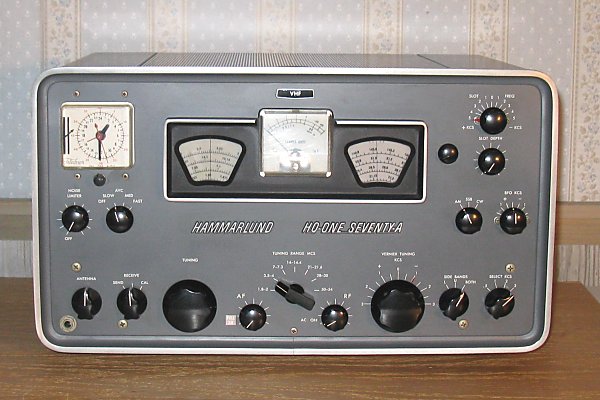|
Notes: Maximum i-f bandwidth is about 6 kHz @ -6 dB.
One can help but notice the dramatic dynamic range drop off on the higher bands and a quick study of the schematic shows the likely reason. On 160 and 80 meters the receiver operates in dual conversion mode and V3 is operated as an amplifier. On 40 meters and above a third conversion to boost image rejection is performed in V3. Halli chose to do this with V3 operating as a converter stage.
In order to verify that this was the problem, a quick modification was tried. The 2.58 MHz oscillator was disabled and the V3 converter stage was set up as a mixer - very similar to the first mixer V2. An external HP-8640B / amplifier was used as the 2.58 MHz oscillator. Blocking and two-tone dynamic range improved to the tune of about 15 dB. This still didn't equal the 80 meter performance but at least got it into the ballpark.
Since this receiver was on loan (and in mint condition) no effort was made to optimize performance by adjusting stage gain, LO levels, etc. This was a quick test to verify the problem. Seems it should be possible to add an additional tube that functions as the 2.58 MHz oscillator and use V3 either as a straight through amplifier on 160 and 80 meters or as just a mixer on the higher bands.
The same circuit idea was used in the 160, 170 and 180 series receivers so performance on those models may have similar characteristics.
|
|

